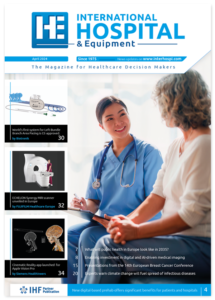Cycling in bed is safe for ICU patients
Early bicycle exercise during their stay in a hospital intensive care unit (ICU) may help some patients recover more quickly.
Researchers at McMaster University and St. Joseph’s Healthcare Hamilton have demonstrated that physiotherapists can safely start in-bed cycling sessions with critically ill, mechanically ventilated patients early on in their ICU stay.
‘People may think that ICU patients are too sick for physical activity, but we know that if patients start in-bed cycling two weeks into their ICU stay, they will walk farther at hospital discharge,’ says the study’s lead author Michelle Kho, an assistant professor with the School of Rehabilitation Science at McMaster University and physiotherapist at St. Joseph’s Healthcare Hamilton.
‘Our TryCYCLE study builds on this previous work and finds it is safe and feasible to systematically start in-bed cycling within the first four days of mechanical ventilation and continue throughout a patient’s ICU stay.’
Patients who survive their ICU stay are at high risk for muscle weakness and disability, and muscle atrophy and weakness starts within days of a patient’s admission to the ICU. Cycling targets the legs, especially the hip flexors, which are most vulnerable to these effects during bed rest.
By strengthening their muscles and overall health, patients may go home sooner, stronger and happier. This not only benefits the patient, but could alleviate the high cost of critical care for the healthcare system. TryCYCLE is the first of a series of studies that will determine the effects of early in-bed cycling with critically ill patients.
Over a year, Kho and her team conducted a study of 33 patients in the ICU at St. Joseph’s Healthcare Hamilton. The special in-bed cycling equipment was provided by the St. Joseph’s Healthcare Foundation.
Patients were 18 years of age or older, receiving mechanical ventilation, and walking independently prior to admission to the ICU. The treatment in the ICU was 30 minutes of supine cycling using a motorized stationary bicycle affixed to the bed, six days a week.
The researchers found that early cycling within the first four days of mechanical ventilation among patients with stable blood flow is safe and feasible. Patients started cycling within the first three days of ICU admission and cycled about 9 km on average during their ICU stay.
McMaster University http://tinyurl.com/h7bqgbv

